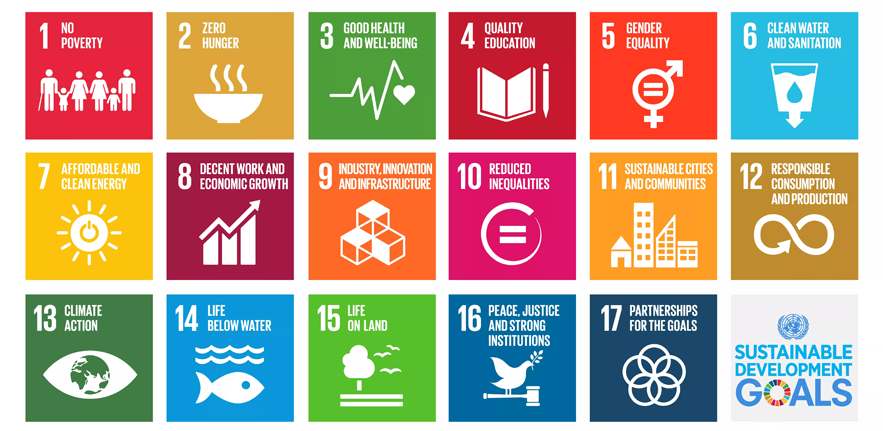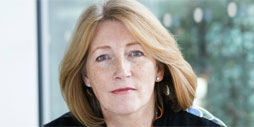
18 December 2018 – Sue Garrard, CISL Senior associate and Unilever’s former EVP Sustainable Business, was responsible for leading and embedding the company’s ambitious USLP (the Unilever Sustainable Living Plan) into the business and ensuring progress against its 70-plus time bound targets. Here she provides 10 lessons for embedding sustainability across the business
Business as usual will not deliver the outcomes required of the UN Sustainable Development Goals or the Paris Climate Agreement. Leadership as usual will not deliver the transition that we need. Organisations are beginning to see this; the need to be proactive in identifying systemic solutions, to find ways to reshape markets, value chains, whole economies, so they’re rewarded in the market for superior performance on sustainability. But achieving this is no easy feat.
These challenges framed how I approached the rather daunting task to embed Unilever’s Sustainable Living Plan, which began with the question: how to make Unilever a strong and sustainable business that was going to be around for the next one hundred years? Here are few of the lessons I learnt along the way:
Lesson 1: Know your own mind
There is something really fundamental in the roles you play in leadership, in companies, senior roles particularly, about your own moral compass. Increasingly what I’ve found on my own journey was that I was very fortunate in having a very deep sense of my own moral radar that I could fall back on. Leadership is not something that’s just ‘top’ - it’s at multiple levels, top to bottom, and we all need to lead in our own ways, but I think it’s unbelievably hard to do that unless you know not only your own mind but your own heart.
Lesson 2: Give yourself space to think about the future of the world
It really isn’t crucial to be a subject matter expert. It is crucial to give yourself the space from the detail, to step back from it, to think forward about the future of the world – these are enormous things, you have to find that space – the future of your company, the future of consumers, or the sector that you’re in, and to really think deeply about what will really matter and what the big drivers are for your organisation. Very few people have the luxury of doing that thinking, and I think it’s central to this role.
Lesson 3: Don’t feel you need to have all the answers
There are lots and lots of experts, on all sorts of aspects of what you do as a business – suck them dry, make sure you get every level of information you possibly could need, but don’t fall into the trap of feeling that you need to know all the answers, because you can’t. It’s impossible. And if you try, not only will you not succeed, but you will completely miss the point of what your role is as a leader. So, understanding what your relationship is between deep subject matter experts, and how to draw on them, and how to make the most of the expertise they’ve got is really fundamental.
Lesson 4: Always combine the moral case and the business case
As soon as people in organisations get the bug for sustainability they absolutely love the moral case and they forget the business case, and what you risk ending up with is philanthropy on steroids, so again I come back to some very simple operating principles here. You have to, all the time, try to find the highest, not the lowest, common denominator solution, of combining the moral case and the business case. When you do that – and by the way that’s really difficult, but everything you do in brand-building is really difficult, everything worthwhile you do in life is really difficult – then you have magic.
Lesson 5: Have patience
This is a marathon, not a sprint, fix your mind on what the outcome is you’re trying to achieve, and be patient and flexible, but tenacious about the path that you take to get there.
Lesson 6: Make the customer case
Recognise that sustainability is never going to become truly embedded in the business unless you get to a customer case. Unilever invested a very large amount of time and effort, and a fairly significant amount of money, trying to finally nail that question. We were able to demonstrate that sustainability was already one of the key drivers for a lot of brands, and we understood what it would take to trigger purchase. Suddenly our marketing people, who wanted to be part of this movement but didn’t understand how it could drive sales, said, “Hurrah, now we understand where the opportunity lies, we need to work with our own brands to drive environmental performance and a deep sense of social connection.” And that’s been transformational.
Lesson 7: Walk a mile in the other person’s shoes
Put yourself in that leader’s shoes; equip them with the facts; help them understand broadly speaking what the macro-dynamics actually are. Give them a sense of the knowns and the likely risks to your organisation of inaction. Try and create a partnership; once you’ve got a common understanding about what the alternative future could look like and what the high level moves are in strategic terms; consider how to co-opt other people at all levels in the organisation on that journey. Then personally and humanly identify what the problem is you’re trying to solve.
Lesson 8: Break down the silos
The challenge much more within a large organisation like Unilever is how to get out of any kind of silo mentality; who’s responsible for what and instead create an intelligent level of collective endeavour, and understand where you need to build capacity capability and what the relationship is between capability and commitment and delivery. A crucial enabler to that is governance – do the senior people make the time to sit down together with this as the only thing they talk about. One of our biggest breakthroughs was creating a governance group, where all the right people were there. And the quality of the conversations and the level of commitment and active learning and driving change and identifying where the next set of change leaders were in the business was fantastic.
Lesson 9: External communications
We’re all human beings, and we believe much more strongly in things said about our organisation when we hear them said outside. So the corroborative effect, and the triangulation of hearing about your organisation, particularly through your leader, from people outside – whether it’s the media or stakeholders doesn’t really matter – is massively more powerful than anything someone like me can do in communication terms within the company. So external communications is a crucial amplifier and reinforce of an early belief system within an organisation. You need all your senior leaders to be visible externally, talking about how this agenda is an essential part of their role and their team’s agenda. Driving it into wider policy, engaging in public debate, seeking to be the progressive voice of business. Leaders need to walk the talk – and vice versa!
Lesson 10: Connect people to purpose
Help people in the business, particularly people at senior levels, connect what the company’s purpose is with what’s the business plan. Purpose tends to sit on its own; it tends to be a strap line. Instead it needs to be a concrete driver of decisions and choices, and almost always that’s about how you merge sustainability with the business case. So education about how those three actually fit together.
The journey to becoming a fully sustainable business for any major company will be iterative and at times very challenging. It’s much easier if you’re a new business and designed that way. But all businesses need to make progress on this. There’s no manual and few if any precedents, so that means drawing on human qualities of vision, courage, values and tenacity to lead for this change. Hopefully these ten lessons will provide a bit of help for people reading this blog. Courage mes braves!





